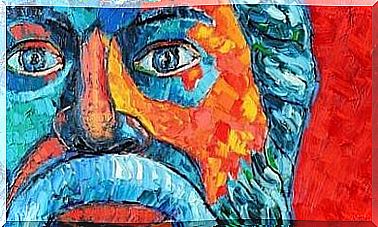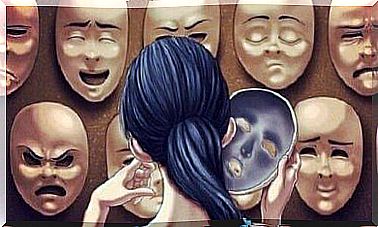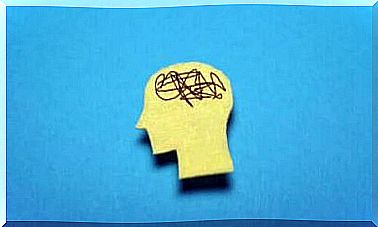Emotion Curve: Life Cycle Of Emotions

Emotion is generally defined as a subjective state with an immense or strong affective charge. Although it is difficult to explain emotions precisely, everyone can clearly describe these subjective states they experience. For example, you can describe a situation where you felt anger or happiness. Most of these emotions, from grief to anger, have a similar life cycle: the emotion curve.
What is the purpose of emotions?
According to researcher Martinez-Sanchez (2011), suppression or non-expression of significant emotions (crying due to imminent loss, showing love, etc.) can cause significant physiological overactivity, suppress the immune system, and cause other adverse effects on physical and mental health in the short term.
Why, then, are emotions and their expression so important? These same scholars refer to human internal functions related to homeostasis and survival, as well as human external functions that are more social in nature.

Internal factors
- Emotions help coordinate different cognitive, physiological, and behavioral response systems.
- They trigger behaviors that might be blocked without that feeling. For example, a person who is not very physical will be able to run fairly quickly when scared. Or a very peaceful person is able to defend someone else when they are angry or furious.
- Emotions prepare the body for an escape or fight reaction. They have an extremely important role to play in survival. The feeling of fear is just the prelude to an escape or fight reaction in the face of a threat. Without a sign of fear, the body would not be able to prepare to face danger or escape.
When the body gives an alarm in response to a dangerous stimulus (when you feel fear), this activates the hypothalamic-pituitary-adrenaline axis. This in turn activates the adrenaline glands, which release glucocorticoids. The body releases adrenaline and the body’s own opioids to relieve physical pain just as if you were under attack. At the same time, those body systems that are not needed for the escape reaction, such as the digestive system, are attenuated.
When there is danger, fear raises the heart rate, contracts the spleen to release red blood cells in case of injury, dilates the pupils, etc.
Emotions help to process information quickly. This allows the brain to quickly assess the nature of the stimulus in question, allowing us to act in the way best suited to the situation as quickly as possible.
External factors
Emotions help tell other people about your own intentions and state of being. They control facial expressions, gestures, and tone of voice so that we can influence other people’s behavior as well.
As Aristotle once wrote, man is a political animal and emotions also have a social function. Emotions, for example, affect how other people behave. Some people take advantage of grief when they need support from others, some take advantage of affection or joy, etc. Emotions have many, many roles in relationships.
Emotion curve, emotion life cycle
It is difficult to maintain the maximum intensity of emotion for long periods of time. In fact, the normal trajectory of emotion is a curve. At first, the emotions become stronger and stronger. When they have reached their maximum strength, i.e. are at their peak, their strength begins to decrease. This is an emotion curve.
Most don’t think about this in their daily lives, especially in terms of mental health. This curve applies to all emotions, including anxiety and panic attacks. They rarely last more than ten minutes.
The strong emotional wave that accompanies fear, anger, or grief causes a person to react very easily when emotion is at its strongest. Many people in therapy are there for this very reason: when emotion is at its strongest, the actions taken during it are often harmful to us.
Learning emotion management in therapy
In the early stages of therapy, when the patient is unable to control their reactions, it may be helpful to address the emotion curve. The goal is not to control the emotion, but to avoid the detrimental consequences that a poorly controlled intense emotion can have.
For people with depression, anxiety, and grief, it can be very helpful to learn how emotions work. The therapist should also tell you how the patient should act when the emotion is at its strongest. Over time, the patient should learn through therapy not to react so strongly to emotions.

Three things that shouldn’t be done at the top of the emotion curve
It is important to explain what three things should not be done during a strong emotion, be it a feeling of anger, sadness, fear, or joy. Experts recommend this because the actions at those moments are probably not rational.
Here are a few things you shouldn’t do at the top of the emotion curve:
- Don’t make decisions. Take, for example, a woman with clinical depression. It is important to make him realize that making decisions is dangerous when he is at his worst. The decisions made at that time always go hand in hand with deep sadness or despair. Thus, if he avoids making decisions in those gloomy moments, he can avoid horrific consequences such as suicide or self-harm.
- Do not try to solve the problem. If a strong emotion was caused by a particular event, no attempt should be made to resolve the problem during emotional turmoil. When the rational part of the brain is off, you don’t have the tools to solve the problem. In addition, the frustration caused by the situation can lead to poor solutions. It is best to let the matter remain until the intensity of the emotions decreases.
- Don’t think. Emotions can lead to endless catastrophic, irrational, and useless thoughts. Some of these thoughts, in turn, can evoke new and equally strong emotions, which can lead to irrational behavior.
In addition to avoiding these three things, you should also create a list of things you can turn to during intense emotions. Come up with things to help you avoid thinking, solving problems, and making decisions. Keep the list at your fingertips for the next moment when you’re at the top of your emotion curve.








